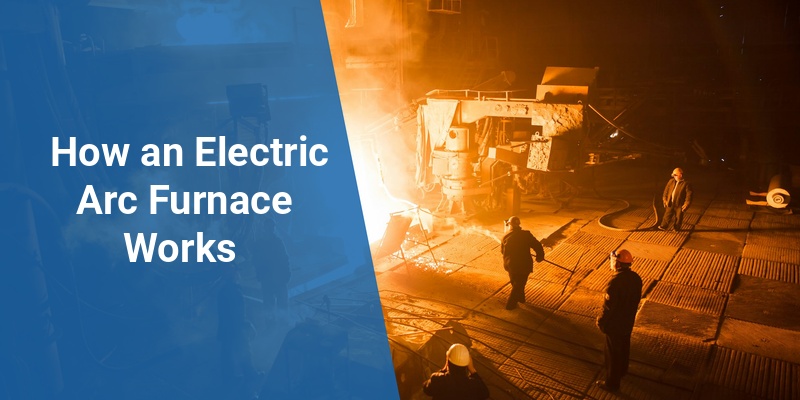An Electric Arc Furnace (EAF) is a pivotal technology in modern steelmaking and metal recycling industries. It uses electric arcs to melt metals efficiently, offering an environmentally friendly alternative to traditional blast furnaces. This article explores the fundamental principles behind EAFs, their operational processes, and technological advantages. Understanding how an electric arc furnace works reveals why it remains a preferred choice for producing high-quality steel and managing scrap metal reuse.
| Aspect | Details |
|---|---|
| Energy Source | Electric arcs generated between graphite electrodes and scrap metal |
| Primary Function | Melting steel scrap and refining metal |
| Main Components | Refractory-lined vessel, electrodes, transformer, power supply |
| Typical Operating Temperature | Up to 3,000°C (5,432°F) |
| Advantages | Energy efficiency, environmental friendliness, flexibility in raw material sourcing |
Basic Principles Of Electric Arc Furnace Operation
An Electric Arc Furnace melts metal by generating an intense heat through electric arcs formed between graphite electrodes and the metal scrap. The furnace consists primarily of a steel shell lined with refractory bricks to contain the heat and molten metal. When voltage is applied, an arc strikes the scrap, producing temperatures reaching up to 3,000°C, which melts the scrap efficiently.
Electric arcs function as a concentrated heat source, allowing for rapid melting and the ability to precisely control the furnace temperature and atmosphere. This method reduces energy waste and provides a cleaner melting process compared to fossil fuel-based furnaces.
Key Components Of An Electric Arc Furnace
Furnace Shell And Refractory Lining
The furnace shell is a robust steel structure designed to withstand high temperatures and mechanical stress. Inside, a refractory lining made from materials such as alumina or magnesia protects the shell from heat and chemical attack caused by molten metal and slag.
Graphite Electrodes
Large graphite electrodes are inserted into the furnace through the roof. These electrodes conduct electrical current to create arcs with the scrap metal. They are consumable parts that gradually erode and require periodic replacement.
Power Supply And Transformer
The power supply delivers high-voltage electricity, which is then stepped down through a transformer to a suitable current and voltage to maintain stable arcs. This equipment is critical to efficient energy transfer and operational stability.
Step-By-Step Process Of Metal Melting In An EAF
- Charging: Scrap metal is loaded into the furnace through the top hatch.
- Arc Initiation: Electrodes lower to strike an arc with the scrap, rapidly heating the metal.
- Melting: The electric arcs generate intense heat, melting the scrap into a molten pool.
- Refining: Oxygen may be injected to remove impurities, and flux additives help form slag to capture contaminants.
- Tapping: Once the desired chemical composition and temperature are achieved, the molten metal is poured out of the furnace.
This controlled sequence allows for precise chemical adjustments and high-quality steel production.
Call 888-906-9139 for Free Local HVAC Quotes – No Obligation, Just Savings!
Technological Advantages And Environmental Benefits
An Electric Arc Furnace offers significant advantages over traditional smelting. It uses electricity rather than coke or coal, which drastically reduces carbon dioxide emissions. The ability to recycle scrap metal also conserves natural resources and lowers environmental impact.
Additionally, EAFs are highly flexible. They can be started and stopped quickly, adapting to fluctuating market demands, and can melt a wide variety of metal grades and scrap types. This flexibility makes EAFs indispensable for steel producers focusing on sustainability and cost-efficiency.
Maintenance And Operational Challenges
Maintaining optimal operation requires regular electrode replacement, refractory repair, and equipment inspections. The high operating temperatures and electrical loads can cause wear and stress on furnace components.
Addressing issues such as electrode consumption, slag management, and arc stability through advanced monitoring technologies enhances furnace lifespan and productivity. Operators must also follow stringent safety protocols due to the hazards posed by molten metal and high-voltage equipment.
Modern Innovations In Electric Arc Furnace Technology
Recent advancements include the integration of automated controls, real-time process monitoring, and improved electrode regulation. These innovations increase energy efficiency, reduce downtime, and enhance the consistency of the molten steel quality.
Some EAF systems incorporate off-gas treatment technologies to capture pollutants and recover energy. These features align with stricter environmental regulations and sustainability goals.
Applications And Industry Usage Of Electric Arc Furnaces
EAFs are predominantly used in mini-mills and scrap recycling facilities. Their capability to recycle scrap metal efficiently has made them central to secondary steel production.
Call 888-906-9139 for Free Local HVAC Quotes – No Obligation, Just Savings!
Industries such as automotive manufacturing, construction, and machinery rely heavily on EAF-produced steel due to its quality and cost-effectiveness. Furthermore, electric arc furnaces contribute significantly to the circular economy by reprocessing materials multiple times.
